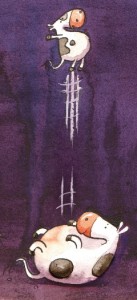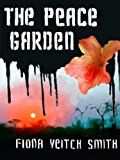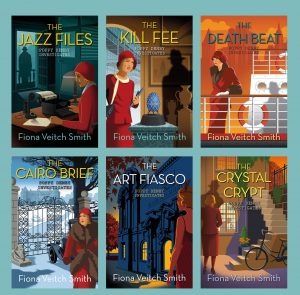 Today I’m bouncing with happiness because the first three books in the Young Joseph series of picturebooks are being released in bookshops around the world.
Today I’m bouncing with happiness because the first three books in the Young Joseph series of picturebooks are being released in bookshops around the world.
It is always a very strange thing to see the character and story that just started as a little daydream take flesh and flourish. Many thanks to the fantabulous Andy Catling who turned my crazy ideas into pictures – and added some more craziness of his own! Thanks too to the wonderful team at SPCK, including our splendid editor, Tracey Messenger.
Between the three of us, we’ve had some good laughs. We hope that you will too when you read these books with the children in your life. But beyond that, that you’ll have a little glimpse of the deeper meaning of the stories.
To order your books, click here or on each of the covers in the right-hand side book column.
Joseph and the Rainbow Robe
The first in a delightful series of illustrated picture books on the life of Joseph for 3-6 year-olds.
In the first book of the Young Joseph series, we find Joseph living in Canaan with his dad, stepmothers, eleven brothers – and lots of scene-stealing cows! Joseph is his father’s favourite, which makes his brothers very cross, especially when he tells them about the dream he has had in which the sun, moon and eleven stars bow down to him. To cheer him up, Joseph’s dad gives him a beautiful coat of many colours – a ‘rainbow robe’ to remind him that God loves everyone – even his brothers.
Joseph and the Jealous Brothers
The second title in the Young Joseph series.
Joseph’s brothers grow more and more jealous of their favoured brother. They come up with a cunning plan to take Joseph down a peg or two by throwing him in a well to give him a fright. Eventually they sell him to passing slave traders but that’s not the end of his story!
Joseph and the Lying Lady
The third book in the Young Joseph series.
Joseph finds himself in Egypt and is sold to a very important man called Mr Potiphar. Mr Potiphar is very busy and his servants are very lazy – as a result his house is a mess! With the help of his ever-helpful cow companions, Joseph soon takes charge and has things spick-and-span in no time. There’s only one problem – and that is Mrs Potiphar, who is jealous of Joseph. What scrapes will Joseph get into next?



